Employee recognition involves recognizing and appreciating an individual’s contributions, efforts, and accomplishments within the workplace. It goes beyond mere acknowledgment, encompassing a thoughtful and intentional approach to highlighting employees’ positive behaviors, outcomes, and dedication to their roles. Employee recognition is a powerful tool for reinforcing desirable behaviors and creating a positive work environment.

How SwagMagic can help your brand?
- Bulk Buy & Save on your gifts!
- Curate Customized Swag Boxes!
- Launch Your Store for your employees!
- Secure Swag Storage with us!
Table of contents
- Summary
- 1. Key Components of Employee Recognition
- 2. Importance of Employee Recognition in the Workplace
- 3. Significance of a Comprehensive Employee Recognition Program
- 4. The Psychology of Employee Recognition
- 5. Ways & Types of Employee Recognition
- 6. Employee Recognition Gifts and Swag Ideas
- 7. Best Employee Recognition Platforms and Companies
- 8. Designing an Effective Employee Recognition Program
- 9. The Role of Leadership in Employee Recognition
- 10. Measuring the Impact of Employee Recognition
- 11. Overcoming Common Challenges in Employee Recognition
- 12. Emerging Employee Recognition Trends in 2025
- 13. Best Practices for Sustaining a Culture of Employee Recognition
- 14. The Future of Employee Recognition: Enhancing Engagement with SwagMagic
Summary
Employee recognition plays a crucial role in fostering a motivated and engaged workforce. A well-structured recognition strategy helps employees feel valued, appreciated, and inspired to contribute their best efforts. Here are key aspects of an effective recognition approach:
- A successful employee recognition program includes timely appreciation, personalized rewards, peer-to-peer recognition, and alignment with company values. These elements ensure employees feel valued and motivated.
- A well-designed employee recognition program includes both monetary and non-monetary rewards. It should offer flexibility, allowing employees to choose rewards that matter most to them.
- Regular employee recognition boosts morale, engagement, and retention. Thoughtful rewards create a positive workplace culture, fostering loyalty and productivity.
Curate the perfect box of handpicked gift they’ll love and send joy their way
- Employee recognition can be verbal, digital, or tangible. Simple gestures like peer shout-outs, kudos, milestone celebrations, or personalized gifts make a lasting impact.
- Personalized gifts make employee recognition more meaningful. Options like branded swag, gift cards, curated snack boxes, or experience-based rewards show appreciation uniquely.
1. Key Components of Employee Recognition
The strategic imperative of employee recognition extends beyond mere procedural norms. It encapsulates the purposeful acknowledgment and appreciation of an individual’s contributions, efforts, and achievements within the organizational context.
Far from being sporadic, the employee recognition of excellence requires a systematic and inclusive approach, foundational for nurturing a positive work milieu and fostering a motivated, high-achieving workforce.
As we navigate this exploration, our focus sharpens on the integral components of effective employee recognition – acknowledgment, appreciation, and validation. By elucidating their profound significance, we shed light on how these elements intricately mold a workplace culture that not only values but propels its human capital toward unparalleled excellence.
- Acknowledgment: Publicly or privately recognizing an employee’s efforts.
- Appreciation: Expressing gratitude for the value an employee brings to the organization.
- Validation: Confirming the significance of an employee’s contributions to the overall goals.

2. Importance of Employee Recognition in the Workplace
Employee recognition is not merely a nicety; it is a strategic imperative for cultivating a thriving and productive workplace. Recognizing employees has a profound impact on morale, engagement, and overall organizational success.
- Boosts Morale: Recognition fosters a positive atmosphere, contributing to higher job satisfaction and a sense of belonging.
- Enhances Motivation: Acknowledgment reinforces desired behaviors, motivating employees to exceed expectations and pursue excellence.
- Improves Retention: Employees who feel valued are likelier to stay with an organization, reducing turnover costs.
- Fosters Healthy Competition: Recognition can create a friendly competitive spirit, encouraging employees to consistently perform at their best.
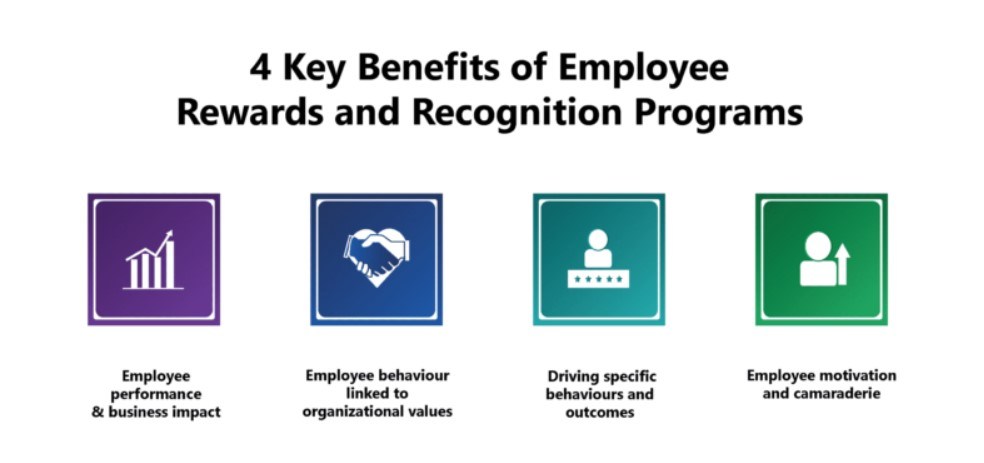
3. Significance of a Comprehensive Employee Recognition Program
A comprehensive recognition program extends beyond sporadic gestures; it is a systematic and inclusive approach to acknowledging achievements at all levels of an organization.
- Inclusivity: A comprehensive program ensures that recognition is fair and accessible to employees at all levels, promoting equality.
- Strategic Alignment: Recognition efforts are aligned with organizational goals and values, reinforcing behaviors that contribute to overall success.
- Consistency: Regular and consistent recognition helps establish a positive workplace culture and reinforces the organization’s commitment to appreciating its workforce.
- Customization: Tailoring recognition to individual preferences and achievements adds a personal touch, enhancing the impact of the acknowledgment.

4. The Psychology of Employee Recognition
In the intricate tapestry of employee dynamics, understanding the psychological nuances of recognition becomes paramount. This section unravels the layers, delving into the intricacies of human needs, motivation, and overall well-being.
- Maslow’s Hierarchy of Needs in the Workplace
Exploring the application of Maslow’s Hierarchy of Needs within professional realms unveils a profound insight into the intricacies of employee satisfaction. From basic physiological requirements to the pinnacle of self-actualization, this subsection navigates how workplace recognition aligns with and addresses these fundamental human needs.
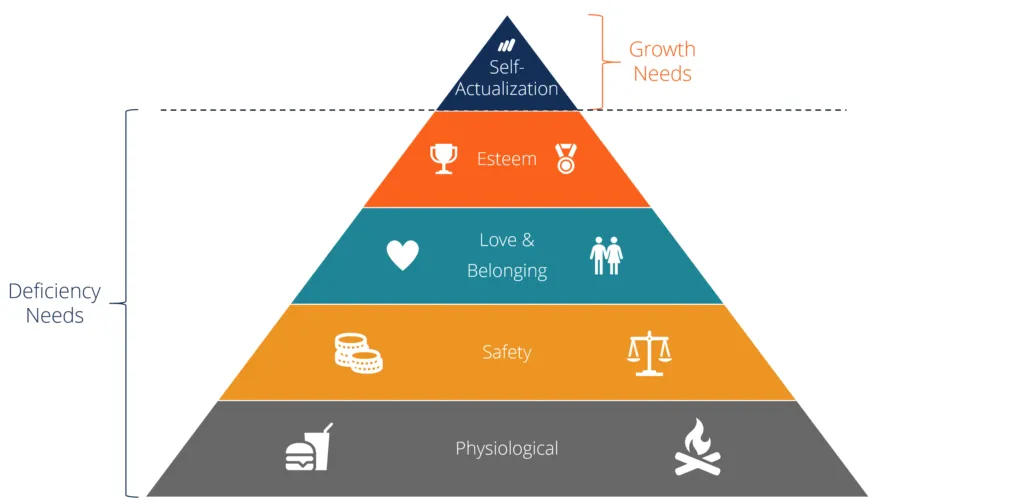
- The Impact of Recognition on Employee Motivation
Recognition catalyzes motivation, propelling individuals beyond the realms of routine tasks. By dissecting the psychological facets at play, this segment articulates the transformative effects of acknowledgment on intrinsic and extrinsic motivational factors. It unveils how strategic recognition not only stimulates productivity but also cultivates a culture of continuous improvement and personal growth.
- Connection between Employee Recognition and Employee Well-being
The symbiotic relationship between employee recognition and well-being is explored in this segment. Beyond the confines of professional achievements, recognition profoundly influences individuals’ mental and emotional welfare within the workplace. As we navigate this connection, we uncover how a culture of acknowledgment contributes to reduced stress, enhanced job satisfaction, and an overall positive outlook on work and life.
In unraveling the psychology of employee recognition, we illuminate the intricate threads that weave together motivation, well-being, and the fulfillment of fundamental human needs in the dynamic fabric of the modern workplace.

5. Ways & Types of Employee Recognition
In the diverse spectrum of acknowledging employee contributions, recognition strategies take on various forms, each serving as a distinctive pillar in fostering a culture of appreciation. This section delineates the dichotomy between formalized programs and the subtleties of informal practices.
5.1 Formal Employee Recognition Programs
Formality adds structure and prestige to recognizing outstanding contributions. Delving into these structured approaches unveils the deliberate efforts organizations make to honor and incentivize exceptional performance.
- Employee of the Month
A monthly recognition program highlights employees who consistently demonstrate excellence in their roles. This accolade not only acknowledges their hard work and dedication but also fosters a sense of healthy competition among team members. By celebrating achievements regularly, organizations reinforce the value of sustained effort and commitment.
- Annual Awards and Ceremonies
Annual recognition events serve as grand celebrations of employees’ accomplishments throughout the year. These ceremonies honor outstanding achievements across various categories, elevating recognition to a company-wide scale. By formally acknowledging contributions, organizations instill pride, enhance motivation, and strengthen workplace camaraderie.
- Gifts, Performance Bonuses and Incentives
Providing tangible rewards such as gifts, monetary bonuses, or additional benefits enhances the impact of recognition. These incentives align appreciation with meaningful rewards, encouraging employees to exceed expectations and contribute to the organization’s overall success. By linking performance to valuable perks, companies create an environment where excellence is consistently rewarded.

5.2 Informal Employee Recognition Practices
In the realm of everyday interactions, informal recognition practices play a nuanced role in acknowledging contributions. These gestures, though subtle, hold immense power in shaping a positive work culture.
- Peer-to-Peer Recognition
Colleagues acknowledging each other’s efforts organically and casually strengthen workplace relationships. Whether through a quick shout-out in a team meeting or a message of appreciation, peer recognition fosters a sense of camaraderie and mutual respect. Encouraging employees to recognize each other promotes a positive and collaborative work environment.
- Verbal Appreciation and Feedback
A few words of encouragement or acknowledgment can go a long way in boosting an employee’s confidence and motivation. Direct and immediate verbal appreciation reinforces positive behaviors, provides instant motivation, and encourages continuous improvement. Whether shared in a one-on-one conversation or a public setting, spoken recognition helps employees feel valued in real-time.
- Written Notes of Acknowledgment
A personalized note of appreciation—whether through email, a handwritten card, or a digital message—adds a thoughtful and lasting touch to recognition. Written acknowledgments serve as meaningful keepsakes, reminding employees of their contributions and the impact they make. This simple yet powerful practice highlights the importance of individual efforts and leaves a lasting impression.
By exploring the dichotomy of formal recognition programs and informal practices, organizations can tailor their approaches to resonate with the unique dynamics of their workplace, fostering a culture where every contribution is seen, valued, and celebrated.

6. Employee Recognition Gifts and Swag Ideas
Selecting appropriate employee recognition gifts requires thoughtful consideration to ensure that the chosen items align with the individual’s preferences and the organization’s culture. Here are some ideas for employee recognition gifts across various categories:
6.1 Personalized Items
- Customized Desk Accessories (e.g., engraved nameplates, personalized pens).
- Monogrammed Leather Goods (e.g., notebooks, laptop sleeves).
- Personalized Coffee Mugs or Water Bottles.
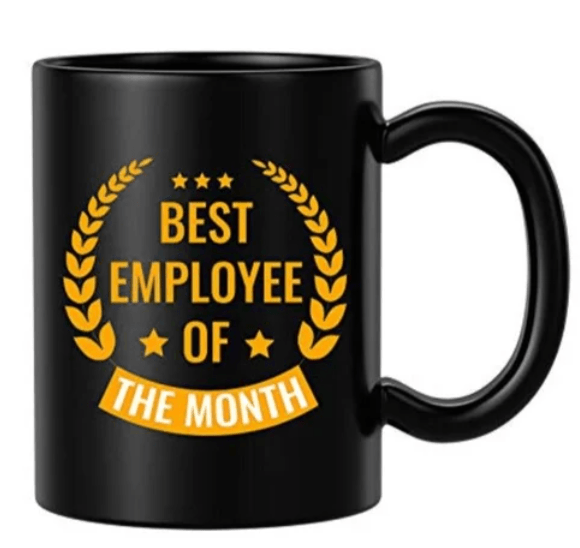
6.2 Wellness and Relaxation
- Spa or Wellness Gift Certificates.
- High-Quality Noise-Canceling Headphones.
- Aromatherapy Diffusers with Essential Oils.

6.3 Professional Development
- Online Course Subscriptions.
- Leadership or Business Books.
- Professional Development Workshops or Conferences.
6.4 Tech Gadgets
- Wireless Charging Stations.
- Smart Home Devices (e.g., smart speakers, thermostats).
- Fitness Trackers or Smartwatches.

6.5 Travel Accessories
- Quality Luggage or Travel Bags.
- Travel Gift Cards.
- Portable Power Banks for On-the-Go Charging.

6.6 Recognition Plaques or Trophies
- Engraved Crystal Awards.
- Custom-Made Trophies.
- Plaques with a Personalized Message.
6.7 Art and Decor
- Limited Edition Art Prints.
- Succulent or Indoor Plant Sets.
- Desk Sculptures or Decorative Items.

6.8 Gift Cards
- Retail Gift Cards.
- Dining or Restaurant Gift Cards.
- Online Shopping Gift Cards.

6.9 Swag Kit
You can get a custom swag kit with branded merchandise printed with the company logo or name.

6.9 Considerations for Employee Recognition Gift Selection
- Individual Preferences: Take into account the recipient’s interests, hobbies, and lifestyle.
- Budget Constraints: Ensure the selected gifts align with the organization’s budget for recognition programs.
- Cultural Sensitivity: Consider cultural differences and ensure that the gifts are appropriate for all recipients.
- Meaningful Acknowledgment: Attach a personalized note or message expressing appreciation for the specific contributions that led to the recognition.
Ultimately, the best employee recognition gifts are those that demonstrate thoughtfulness and consideration, making the recipient feel valued and appreciated.
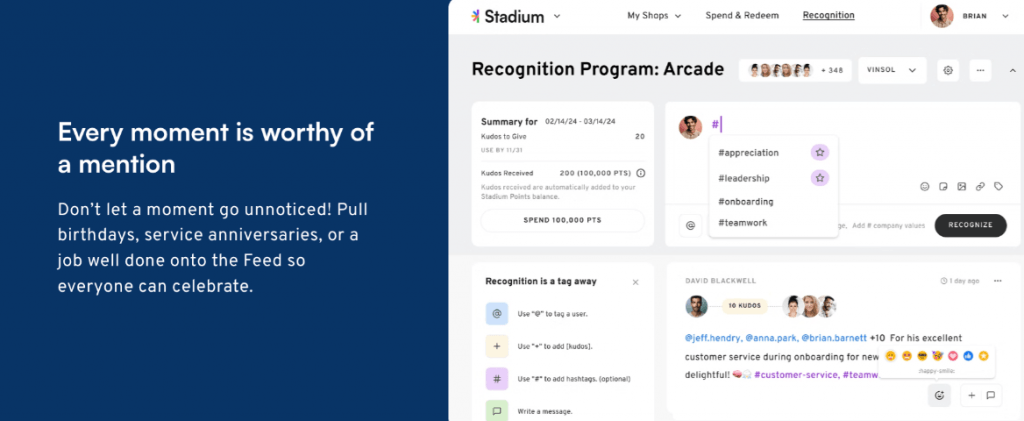
7. Best Employee Recognition Platforms and Companies
Embark on a journey of employee appreciation tailored just for you. Our carefully curated selection of top employee recognition platforms promises to transform your workplace culture, boost morale, and enhance productivity.
7.1 SwagMagic – Global Recognition, Personalized Swag, Branded Stores

Unlock the potential of global appreciation with SwagMagic! Send personalized swag to your team around the world, create a branded swag store for instant access, and curate swag kits that resonate with your unique preferences. Elevate your company identity with SwagMagic’s seamless and personalized recognition experience.
7.2 SnackMagic – Treat Yourself to International Delights
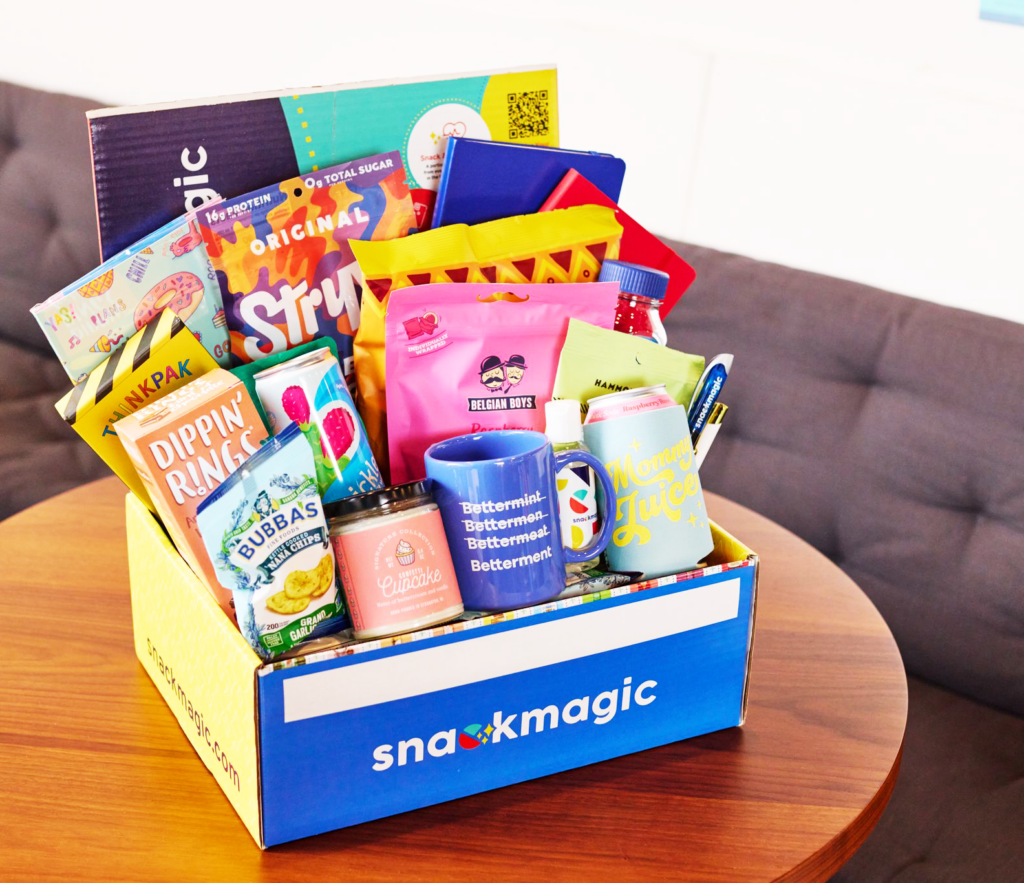
Indulge in the international treat gifting experience with SnackMagic! Pick your own snack stashes from a diverse selection or enjoy themed snack boxes. Elevate your breaks and celebrate achievements with a unique and delicious touch using SnackMagic.
7.3 Stadium – Enterprise-Level Recognition with Global Reach

Discover the pinnacle of employee recognition with Stadium! Establish custom corporate gift shops tailored to your brand, offering freedom of choice for both senders and recipients. Benefit from enterprise-level integration, a global gift-with-points system, and a quick setup with dozens of shop templates. Experience the future of corporate gifting with Stadium!
7.4 Why Choose These Employee Recognition Platforms for Your Employees?
- Comprehensive Solutions: From personalized swag to international snacks and enterprise-level gifting, these platforms cater to your diverse recognition needs.
- Global Reach: Recognize and reward your global team seamlessly with platforms designed to transcend geographical boundaries.
- Customization: Tailor your recognition programs with branded swag stores, themed snack boxes, and customized corporate gift shops that align with your company’s identity.
- Ease of Use: Enjoy quick setup, user-friendly interfaces, and dozens of customizable templates, ensuring a hassle-free experience for both you and your team.
- Flexibility: Whether it’s pick-your-own-stashes, personalized kits, or recipient’s choice gift shops, these platforms provide the flexibility needed for individualized and meaningful recognition.
Elevate your workplace culture, inspire your teams, and witness unparalleled employee engagement. Choose the best employee recognition platforms today! You deserve the extraordinary – recognize with impact!

8. Designing an Effective Employee Recognition Program
In the blueprint for an impactful employee recognition program, meticulous planning is imperative. This section elucidates the foundational elements required to craft a program that not only acknowledges but also strategically reinforces positive contributions.
- Identifying and Understanding Employee Contributions
- Map employee contributions through regular performance assessments, surveys, and feedback sessions.
- Combine quantitative (e.g., sales figures) and qualitative (e.g., collaboration, innovation) insights for a well-rounded view.
- Tailor recognition to individual preferences, ensuring personalized and meaningful acknowledgment.
- Setting Clear Criteria for Recognition
- Define clear benchmarks and performance indicators in collaboration with stakeholders.
- Communicate recognition criteria transparently to employees.
- Regularly review and adjust criteria to stay relevant and adaptable to changes in priorities.
- Aligning Employee Recognition with Organizational Values and Goals
- Define and communicate the organization’s core values.
- Align recognition initiatives with organizational goals to reinforce desired behaviors.
- Foster a culture of recognition, integrating it into daily operations and leadership initiatives.
By meticulously identifying contributions, setting transparent criteria, and aligning recognition with organizational values and goals, organizations can design a recognition program that not only celebrates achievements but also strategically reinforces behaviors essential for sustained success and employee engagement.
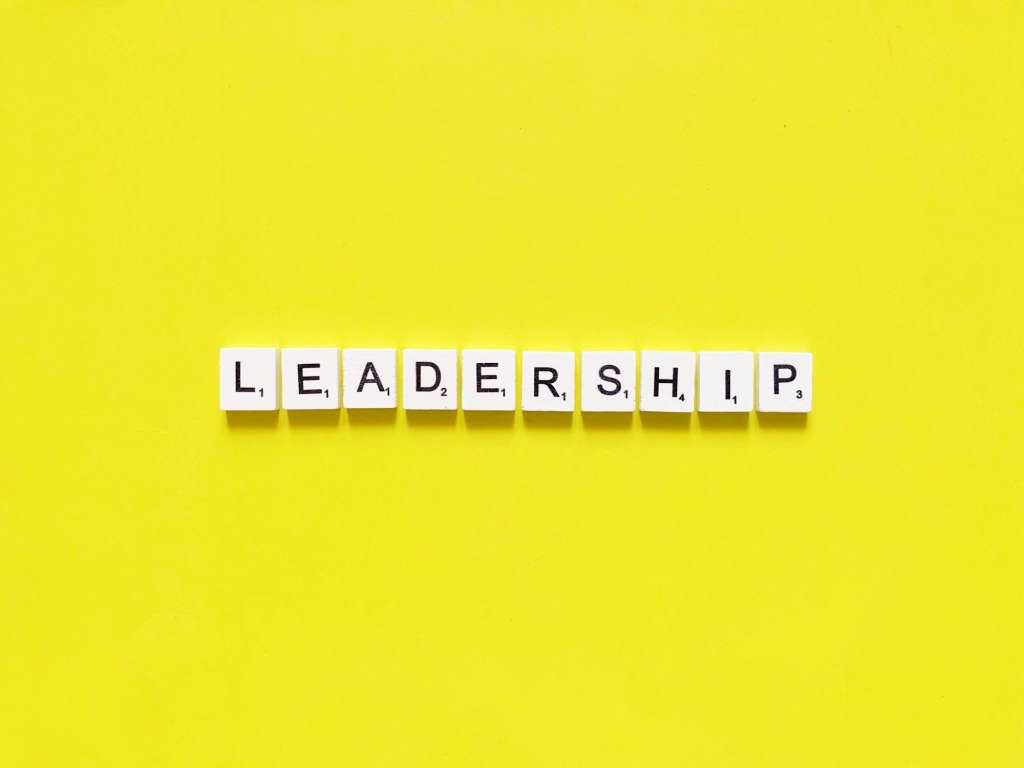
9. The Role of Leadership in Employee Recognition
Effective employee recognition is not just an HR initiative; it’s a cultural imperative that requires leadership commitment. This section delineates the multifaceted role leaders play in championing recognition efforts at both executive and managerial levels.
- Leading by Example: Executives and Recognition
- Encourage executives to publicly acknowledge employees in meetings or town halls.
- Integrate recognition stories into corporate communications to highlight its importance.
- Engage executives in formal recognition events like Employee of the Month or annual awards.
- Managers as Recognition Ambassadors
- Provide managers with training on effective recognition practices and their impact on team morale.
- Incorporate recognition into performance reviews to ensure ongoing acknowledgment.
- Promote peer-to-peer recognition to build a culture of mutual appreciation.
- Creating a Recognition-Focused Culture
- Communicate the organization’s commitment to recognition through both verbal and written channels.
- Incentivize leaders who champion recognition efforts within their teams.
- Regularly evaluate recognition initiatives and adjust based on employee feedback and satisfaction.
By embodying recognition principles at the executive level, empowering managers as recognition ambassadors, and fostering a culture where acknowledgment is ingrained, leaders play a pivotal role in shaping a workplace where employees feel valued, motivated, and committed to organizational success.

10. Measuring the Impact of Employee Recognition
Evaluating the effectiveness of employee recognition initiatives is crucial for optimizing their impact. This section outlines detailed strategies for measuring recognition outcomes.
- Key Performance Indicators (KPIs) for Recognition Programs
- Employee Engagement Rates: Measure engagement before and after recognition programs.
- Productivity Metrics: Track project completion times and task accomplishments.
- Employee Retention Rates: Compare turnover rates pre- and post-recognition initiatives.
- Participation Rates: Monitor the number of nominations, awards, and recognitions.
- Surveys and Feedback Mechanisms
- Employee Satisfaction Surveys: Gather direct feedback on recognition effectiveness.
- Focus Group Discussions: Explore employee insights and improvement suggestions.
- Anonymous Feedback Platforms: Encourage open feedback without fear of repercussions.
- Adapting Recognition Strategies Based on Results
- Continuous Improvement Workshops: Assess results and refine strategies.
- Benchmarking Against Industry Standards: Compare recognition efforts with industry norms.
- Flexibility in Program Design: Adjust programs based on evolving needs and feedback.

11. Overcoming Common Challenges in Employee Recognition
Navigating challenges is integral to maintaining the efficacy of recognition programs. This section presents detailed strategies for addressing common hurdles.
- Addressing Inconsistencies in Recognition
- Establish clear and standardized criteria for fair and consistent recognition.
- Provide regular training to managers on effective and consistent recognition practices.
- Ensuring Inclusivity in Recognition Practices
- Offer diverse recognition platforms, including both formal and informal methods.
- Conduct sensitivity training to raise awareness and address unconscious biases in recognition.
- Dealing with Budget Constraints
- Implement cost-efficient recognition strategies like personalized thank-you notes or virtual shout-outs.
- Prioritize high-impact recognition initiatives to make the most of available resources.
By employing these detailed strategies, organizations can not only measure the impact of their recognition programs effectively but also proactively address challenges, ensuring the continuous improvement and success of their initiatives.

12. Emerging Employee Recognition Trends in 2025
In the ever-evolving landscape of employee engagement, staying attuned to emerging trends is pivotal. This section explores cutting-edge practices in recognition, reflecting the dynamic nature of modern workplaces.
- Technology and Gamification in Recognition
- Implement blockchain-backed recognition platforms to ensure secure and transparent acknowledgment systems.
- Use gamification to create competitive, fun environments that incentivize achievements and drive engagement.
- Personalization of Recognition Efforts
- Leverage AI to offer personalized recognition based on employee preferences and behaviors.
- Curate customized recognition experiences, taking into account individual milestones and work styles.
- Global and Remote Workforce Considerations
- Utilize virtual recognition platforms to include remote and global teams in recognition events.
- Provide cross-cultural sensitivity training to ensure recognition practices are inclusive and culturally relevant.
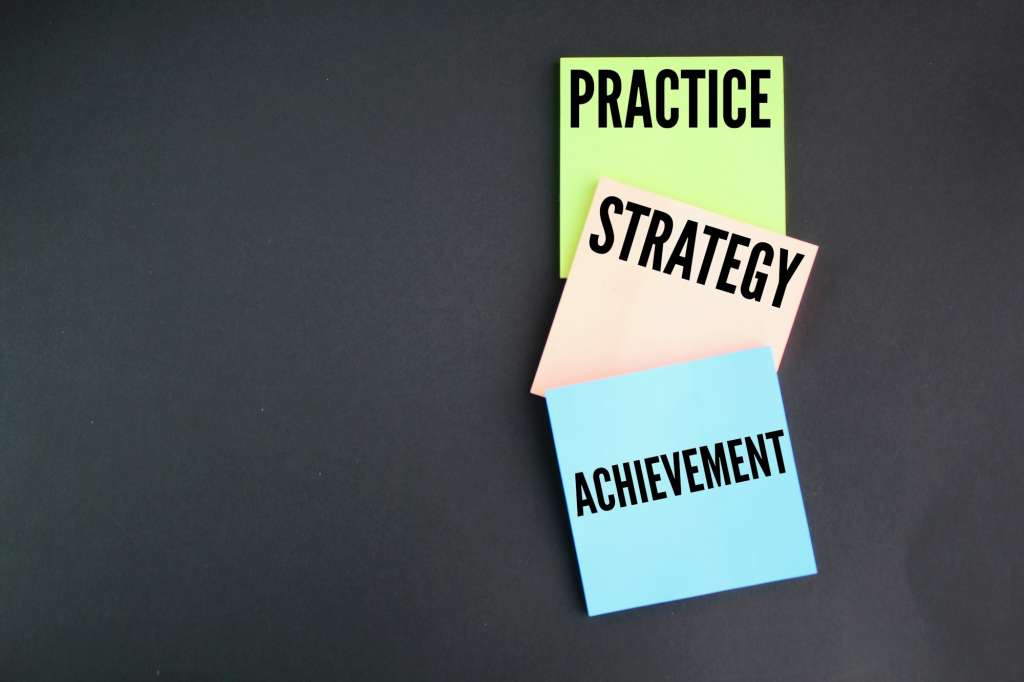
13. Best Practices for Sustaining a Culture of Employee Recognition
Sustaining a vibrant culture of recognition requires a thoughtful and ongoing commitment. This section outlines best practices to ensure the longevity and effectiveness of recognition programs.
- Regularly Reviewing and Updating Recognition Programs
- Conduct annual audits to assess the effectiveness of recognition programs and gather employee feedback.
- Ensure programs are adaptable to changes in company structure, leadership, or strategic priorities.
- Celebrating Milestones and Achievements
- Design tailored celebration events to mark significant milestones, incorporating both virtual and in-person elements.
- Consistently acknowledge small wins to reinforce a culture of continuous recognition.
- Encouraging Continuous Feedback and Improvement
- Implement real-time feedback channels to maintain a continuous loop of improvement.
- Involve employees in shaping and refining recognition programs to align with their evolving needs.

14. The Future of Employee Recognition: Enhancing Engagement with SwagMagic
Recognizing and appreciating employees is crucial for building a motivated, engaged, and high-performing workforce. In today’s dynamic work environments, companies need innovative solutions that go beyond traditional recognition methods. That’s where SwagMagic comes in—offering seamless, customizable employee gifting solutions designed to boost morale, reinforce company culture, and make recognition truly memorable.
14.1 Why Choose SwagMagic for Employee Recognition?
- Effortless Integration: Book a call today to see how SwagMagic can transform your employee recognition strategy!
- Boosts Engagement: Make employees feel valued with personalized, thoughtful gifts.
- Customizable Solutions: Curate unique swag that aligns with your brand and company culture.
- Seamless Experience: Simplify the gifting process with easy ordering, worldwide shipping, and hassle-free management.
- Flexible for Any Workforce: Perfect for in-office, remote, and hybrid teams.
- Enhances Company Culture: Strengthen connections through meaningful recognition moments.
- Global Reach: Deliver swag anywhere in the world with consistent quality and care.

Leave a Comment